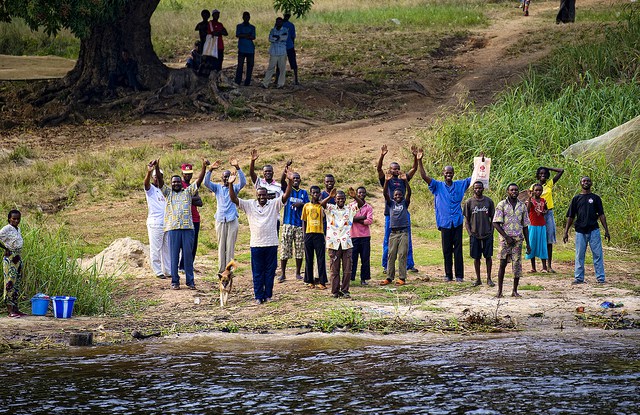
The diversity of genetic material of trees is in danger of being lost due to deforestation and monocrop forestry, putting the livelihoods of millions of forest-dependent people at risk, experts at an international conference said.
Forest tree species have evolved into some of the most genetically variable organisms on Earth, playing a crucial role in improving forest-related industries, climate change adaptation, food resources, disease, and pest resilience, according to a new report released by the U.N. Food and Agriculture Organization (FAO).
“Forests are expected to play this important role in climate change mitigation, but it’s often forgotten they can only fulfill that role if they are able to adapt to changing environmental conditions,” said Riina Jalonen, associate scientist with Bioversity International, during a panel discussion at the Forests Asia Summit in Jakarta, where participants urged the protection of forest genetic resources to preserve ecosystems.
“Genetic diversity is the thing that provides the necessary material for natural selection,” Jalonen said.
The report on “draft strategic priorities for action for the conservation, sustainable use and development of forest genetic resources” is a companion to “The State of the World’s Forest Genetic Resources,” just released by FAO and Bioversity International, based on national reports from 86 countries.
FUTURE DIVERSITY
Documenting, conserving and developing the world’s diversity of forest genetic resources is vital for ensuring that forests can continue to provide food, fiber, timber and ecosystem services. Documentation plays a key role in laying the groundwork for rehabilitation of degraded lands, improved livelihoods and adaptation to climate change, panelists said.
Estimates show the number of forest tree species at 80,000 to 100,000, according to the FAO action plan. The plan also notes that in addition to the 14 million people employed by the forestry sector, many more depend directly on forest and forest products for their livelihoods.
“About 80 percent of people in developing countries use non-wood forest products to meet their health and nutrition needs and for income,” the report said, adding that more than 2 billion poor people depend on wood-based fuels.
The term “forest genetic resources” refers to “the genetic diversity of forest tree species of current or potential value to humanity,” said Judy Loo, Bioversity’s team leader for Conservation and Sustainable Use of Forest and Tree Genetic Resources, during the panel discussion, which focused on the implementation of the action plan.
The cherimoya, a nutritious and popular South American tree fruit still in the early stages of domestication, holds great commercial potential as an agroforestry crop, Loo said.
However, the vast diversity of cherimoya genetic resources — which enables the tree to thrive in a variety of climates and produce a variety of food qualities — risks being lost because of deforestation and inbreeding.
Preserving its genetic resources could make it possible to breed varieties that are more resilient to pests, more productive, more nutritious for consumers or more profitable, Loo added, noting that the same applies to many other potential products including food, timber and medicines.
BEYOND NUMBERS
Documenting, protecting and improving forest genetic resources is also crucial for restoring degraded lands and adapting to climate change, Jalonen said.
Jalonen offered an example of a coastal reforestation project in China that relied on seeds collected from a small patch of inland forest.
The lack of genetic diversity among the seeds led to a low survival rate of the replanted trees, resulting in inadequate restoration of the degraded land and a waste of resources — a failure that leads to a paradox in reporting the results of land restoration projects.
“The more often we fail, the more seeds we plant — it’s just that we keep on planting in the same areas over and over again,” she said.
Reporting on reforestation projects must therefore capture more than the area covered or the number of trees planted, she added.
“We need to evaluate reforestation projects also in terms of the quality of material planted and the success of establishing diverse productive and resilient ecosystems,” Jalonen said.
GENETIC PRESERVATION
A guide on forest genetic resources in land restoration, released in conjunction with the FAO report, aims to inform practitioners on how to prevent failed restoration efforts, as in the example from China.
The guide will also provide some key lessons on how to improve achievements for the Aichi Biodiversity Targets, made under the Convention on Biological Diversity, specifically Target 15, which aims to restore 15 percent of degraded land by the year 2020 — including drawing on projects that are already in place, according to Loo.
“One of the most important aspects of implementing the Global Plan of Action is for action items or priorities to be integrated into other existing strategies and programs … at national, regional and global levels, because forest genetic resources cannot be effectively conserved and managed in isolation,” Loo said.
The panel members concluded that the strategic priorities laid out in the Global Plan of Action should be integrated into national policy frameworks. Furthermore, they argued that resources at both international and national levels should be dedicated to carrying out those priorities, for the future of forest genetic resources and the people and ecosystems that depend on them.
We want you to share Forests News content, which is licensed under Creative Commons Attribution-NonCommercial-ShareAlike 4.0 International (CC BY-NC-SA 4.0). This means you are free to redistribute our material for non-commercial purposes. All we ask is that you give Forests News appropriate credit and link to the original Forests News content, indicate if changes were made, and distribute your contributions under the same Creative Commons license. You must notify Forests News if you repost, reprint or reuse our materials by contacting forestsnews@cifor-icraf.org.
